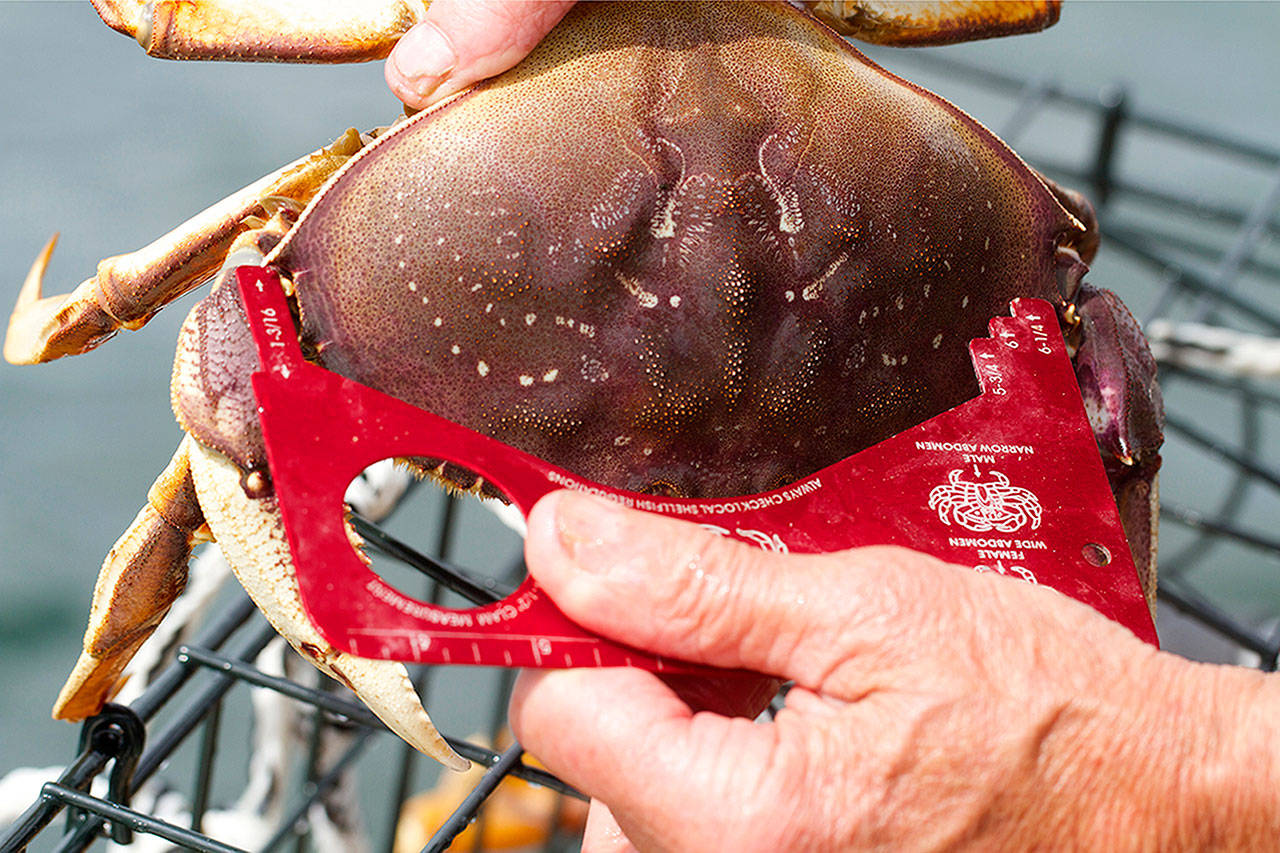Commercial crabbers aren’t the only ones setting and pulling autumn pots around Whidbey Island this year.
That’s because the Washington Department of Fish and Wildlife has reopened select Puget Sound marine areas to recreational fishing Oct. 1-Dec. 31, with generous allocations to Whidbey waters.
After assessing the summer catch, fishery managers approved the late-season harvest in seven marines areas in Puget Sound.
They include Area 8-1, which includes Deception Pass, Hope Island and Skagit Bay; Marine Area 8-2, which includes the east side of South Whidbey Island from Rocky Point to Possession Point; and Marine Area 9, which is Admiralty Inlet on the west side of South and Central Whidbey.
These areas are now open seven days a week to sport crabbers holding a Puget Sound Dungeness crab endorsement.
This means that teaming heaps of Dungeness, red rock and Tanner crabs can now grace local dining tables through the holidays, hauled from the waters at a combined daily rate of 17.
The limits break down like this: five male-only Dungeness crab per day in hard-shell condition with a minimum carapace width of 6.25 inches; six red rock crab of either sex per day with a minimum carapace width of 5 inches; and six Tanner crab of either sex with a minimum carapace of 4.25 inches.
Ralph Downes, an enforcement officer with the state Department of Fish and Wildlife, noted that on Whidbey, the waters to the east are the most productive for crab harvest.
Downes explained how Whidbey fits into the bigger picture of crabbing in the state.
Out of approximately 8 million pounds of Dungeness crab harvested every year from Puget Sound waters, roughly 4 million pounds go to tribal fishers and 4 million to state fishers, according to Downes. Within those totals, Whidbey’s sport Marine Areas 8-1 and 8-2 have a combined allocation this year of 2 million pounds, equating to 1 million pounds to state fishers.
“Of (those) 1 million pounds allocated to state fishers, the Department of Fish and Wildlife projects that approximately 720,000 pounds will be harvested by recreational fishers and 280,000 pounds by our commercial fleet,” Downes said.
The waters to the west of Whidbey are not to be discounted, however. Downes said, “though less productive, they still provide a state allocation of approximately 300,000 pounds.
Area wide, this is shared close to 50/50 by our commercial and recreational fleets.”
Both Downes and Patrick Boin, harbormaster at Port of South Whidbey in Langley, admit the crabbing is not as easy now as during the summer season. There’s a lot more competition from commercial crabbing boats and the weather is less conducive.
But there are a few areas around Whidbey where Fish and Wildlife doesn’t allow the commercial fleet to fish, which increases the opportunity for sports fishers and crabbers.
Families and casual crabbers can also get in the action without launching a boat. Clinton, Langley and Cornet Bay offer dock fishing and crabbing, with the same limits and licenses required.
The Port of South Whidbey began taking reservations for crabbing spots on D and E docks on Oct. 5, with crabbing available from Monday, Oct. 7.
The floating docks at South Whidbey Harbor are open to the public from 9 a.m.-9 p.m.
Sport crabbers dropping pots from vessels can only set or pull the pots from one hour before sunrise through one hour after official sunset.
To help the state monitor continued availability, all crabbers must immediately record late-season recreational catches on winter catch-record cards.
Additional information, including Marine Area identification, regulations and licenses, is available on Fish and Wildlife’s website at wdfw.wa.gov/fishing/shellfishing-regulations/crab



